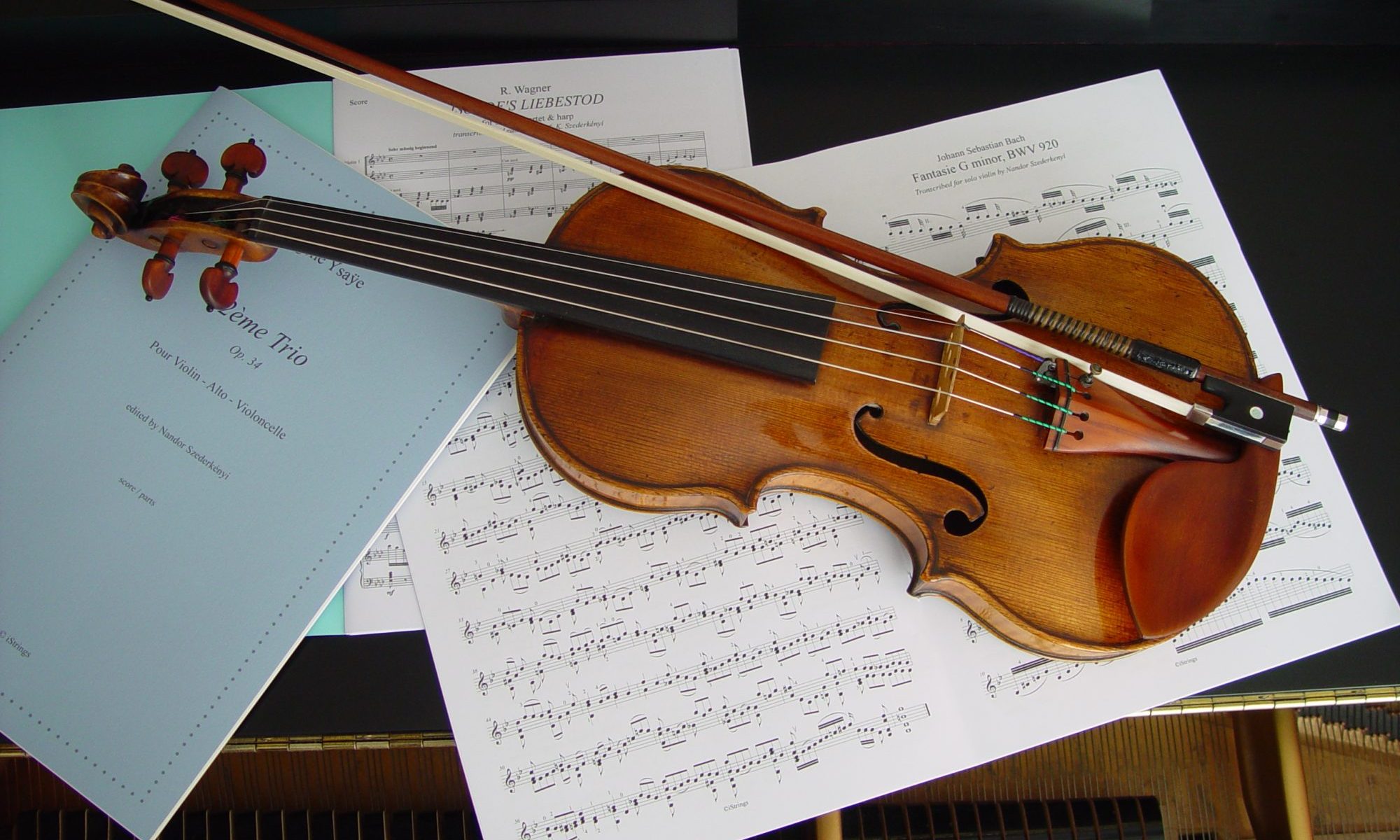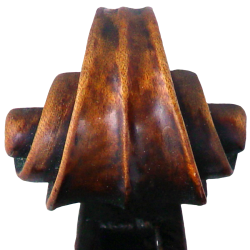After finishing the second trio by Ysaÿe, I’ve started to work on this wonderful piece of chamber music again.
Having played many years ago, it wasn’t new to me, however, I had to discover right at the first couple of measures that Ysaÿe was not happy with his original work.
As explained in my previous blog, after I found the score of the second trio in a folder I have since the beginning of all my Ysaÿe-works, together with songs, I’ve decided to look at the first trio again and correct at least the obvious mistakes.
Before starting, I spent some time searching for any trace at the various libraries and thanks to today’s digital world, I found a score. Yes, it’s a score, it is complete, even with cover page but to my surprise it has been edited, full of erased sections, corrections all over, with obviously the same, Ysaÿe’s handwriting. Of these many markings only one short section (one measure) correction is missing that should be on a separate page that I never found.
Actually, starting with the title, he called it on this cover page Premier Trio de Concert (En une partie). “Le Chimay” has been added later after the first performance that happened 1964 in the town of Chimay, in Belgium. However, it seems that this performance was probably a second premiere. André Mangeot, violinist of the International String Quartet recounted the evening of the first performance as not exactly easy because Ysaÿe came to the stage door giving him couple of notes of some corrections, telling him that this way it will sound much better.
Despite the marking “opus posthume” on my Schott edition, it has an opus number: Op. 33. That means now we may assume that the second trio was probably Op. 34 because La Londres, the trio for two violins and viola has the Op. number of 35. I believe there were no higher Op. numbers of his works.
However, it is interesting to mention that the end of the second trio his date is February 1927 and the date of the first trio August 1927. The only explanation I would have that he dated the first trio at the time when the corrections were made.
As I was working on the first edition of this trio I had only the today still by Schott Music available manuscript copy of the parts. Unfortunately, since at that time was no score to find, I had to take what I had in these some times hardly legible parts.
Since I had no experience with reading his manuscripts yet, I did not really consider that he was also a human being and so he made also mistakes. The parts were so clearly marked (up to the limits of legibility) that I believed all, except some absolutely unclear spots. Now, it is no question any more to me that he disliked to put many of the accidentals, assuming that it is self evident when we are let’s say in F# minor and due to some modulations we have four flats in a bar, without marking them.
As we started the rehearsals back in Canada, first in Saskatoon with my wife viola and a cellist friend from the Symphony there and later in Brandon University School of Music where I was teaching, we had a very hard time to manage somehow to keep it enjoyable with all the dissonances and quite “modern” from Ysaÿe unknown “style”. Well, how we did that, at times we just kept quiet those parts with less convincing notes.
It seems that somehow the first big section, we may call it first movement, had the most problems. At the start, there are sections with completely different notes, right in the second bar viola and cello are rewritten completely. There are several passages rewritten, unfortunately in such a way that one has to find the corrections some times even on a different page, somewhere between staves, once even above the cello part that has solo for couple of bars, having empty staves for use.
Now, knowing already his handwriting well, I have still a hard time to determine what notes are correct because his note heads are tiny, often missing the accuracy of being below, at or above a line. Also, often he used eraser, that is convincing of the corrections of still legible original notes of the first version but also confusing because of the mixture of both.
Thanks to Finale’s playback possibility, (some time horrible sounds but with Garritan sample library much better) I can play back the many possible settings of the corrections to see/hear what might be wrong or right.
As of today, I am doing the last readings, corrections and by practicing the violin and viola parts putting also some practical fingerings and bowings into the parts
This newly edited version will be available soon, here at iStrings.


